Places
Art X Stacks - Places
In this section, we delve deeper into the history of the places portrayed in the artworks on Level 11 of the library. The following resources tell us more about the transformation of the Singapore River, the community memories associated with Chinatown, and bring us back in time to the opening of the former National Stadium in 1973. As we reflect on these stories, we can revisit the paintings and the physical sites with fresh perspectives.
Contents
- Books
- BiblioAsia articles
- Infopedia articles
- Spotlight: Map Collections
- Spotlight: Photographs
- Spotlight: Audio-visual Collections
- Spotlight: MusicSG
Books
| Book | Description |
|---|---|
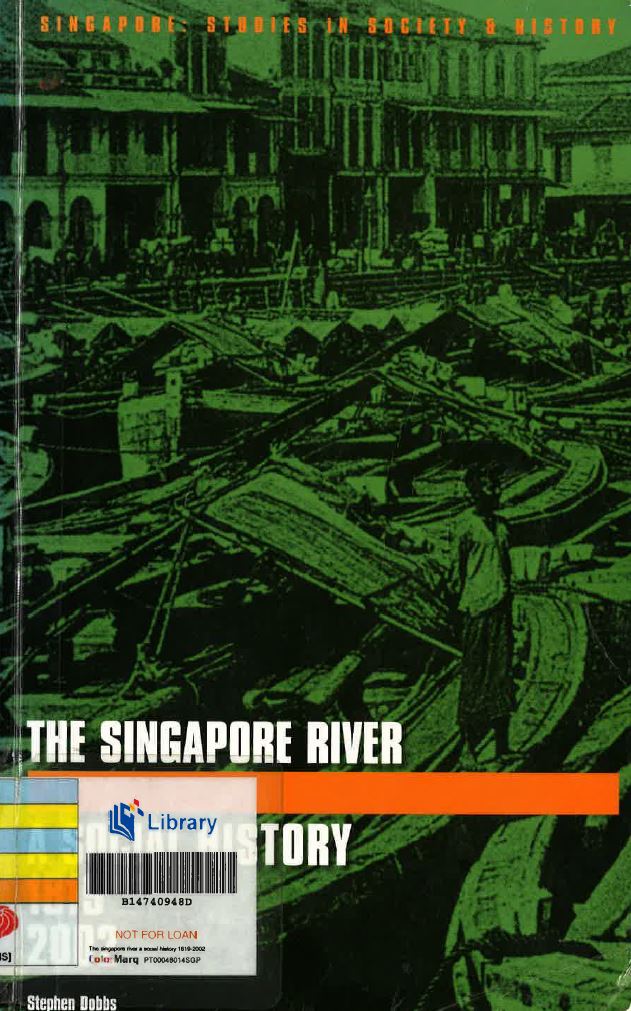 |
Dobbs, Stephen. The Singapore River: A Social History, 1819-2002. Singapore: NUS Press, 2016. Blending social history, geography, economic history and urban studies, Dobbs sets out the history of the Singapore River and of the people who made it their home and workplace. This text should be of interest to anyone wishing to understand Singapore’s many transformations during the past two centuries. Also available as an ebook |
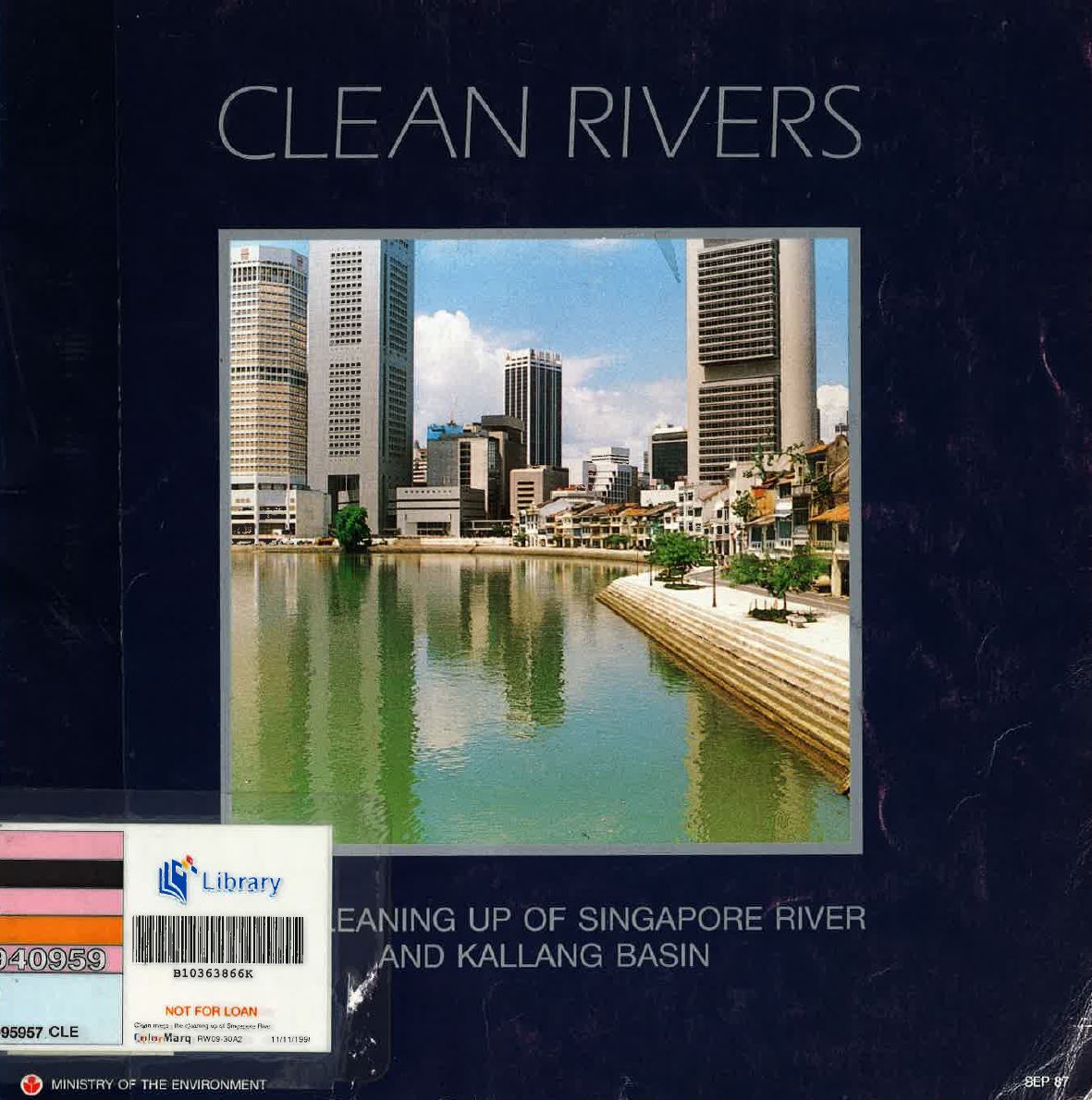 |
Clean Rivers: Cleaning up of Singapore River and Kallang Basin. Singapore: Ministry of the Environment, 1987. Commemorating the completion of a 10-year clean-up of the Singapore River and Kallang Basin, this booklet gives an introduction of the project, including its objectives, action plan and results. |
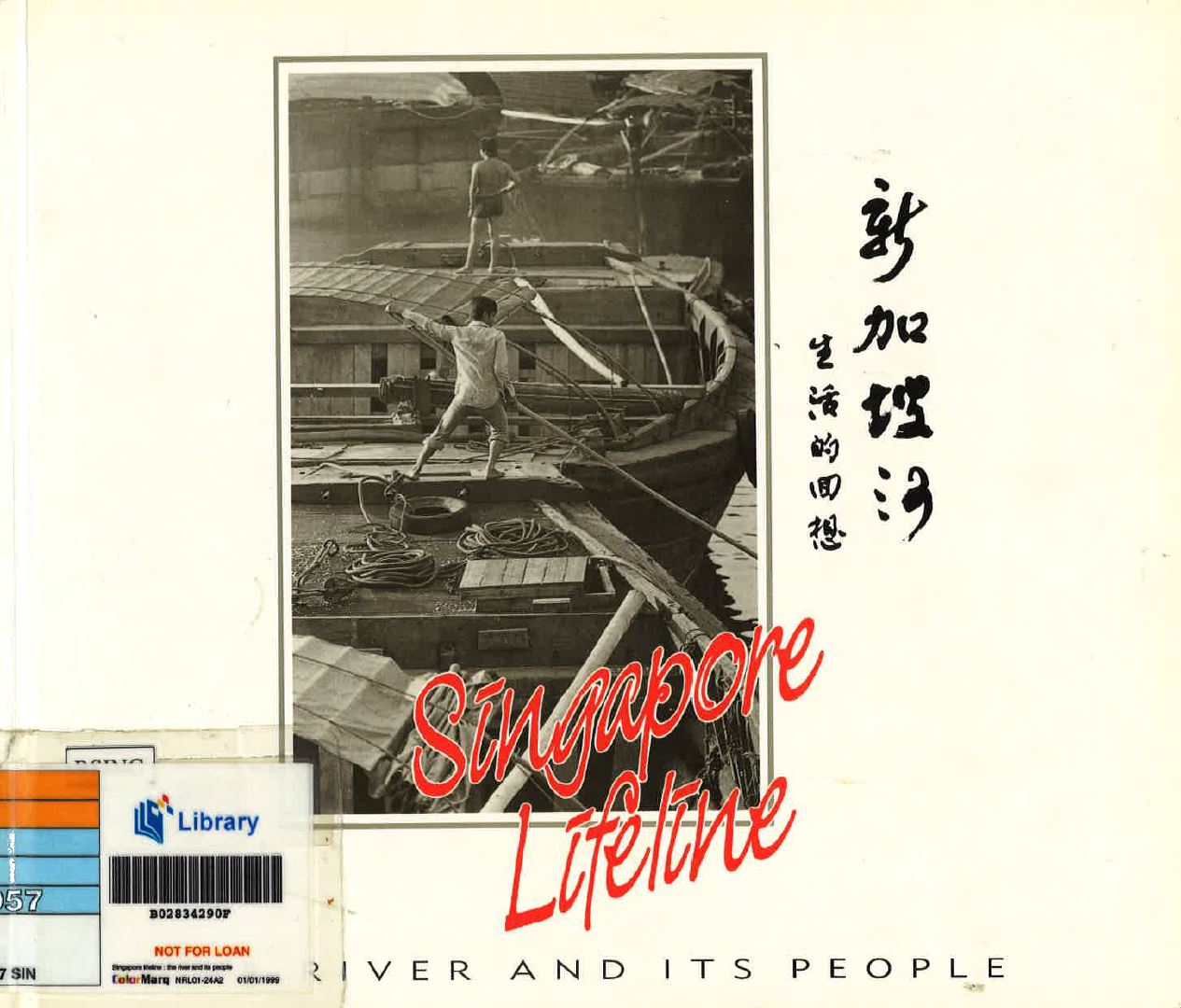 |
Oral History Department. Singapore Lifeline: The River and Its People. Singapore: Times Books International, 1986. This is a publication on the history of Singapore River by the Oral History Department and the National Archives. It contains maps and photographs of the Singapore River’s transformation as a vital artery of trade and transportation. |
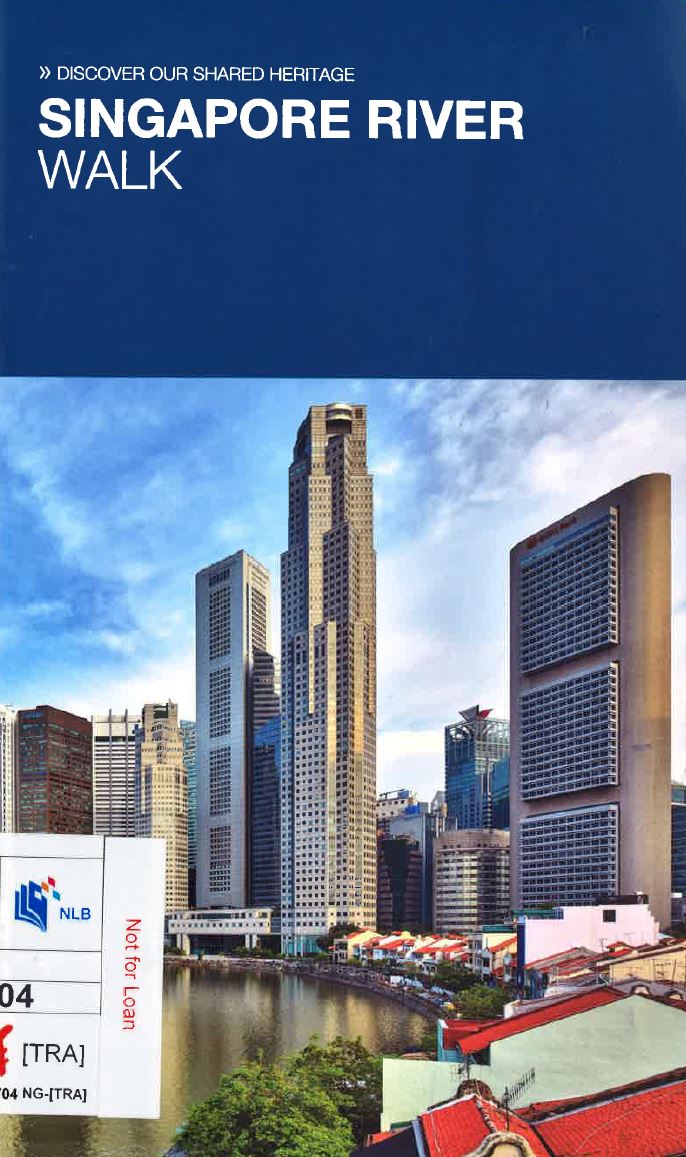 |
Ng, Marcus. Singapore River Walk. Singapore: National Heritage Board, 2016. Produced by the National Heritage Board (NHB), this guidebook provides a history of the Singapore River, with photographs and interviews relating memories of the river. A section of the guidebook focuses on the bridges across the Singapore River. A digital copy can also be downloaded from Roots.sg. |
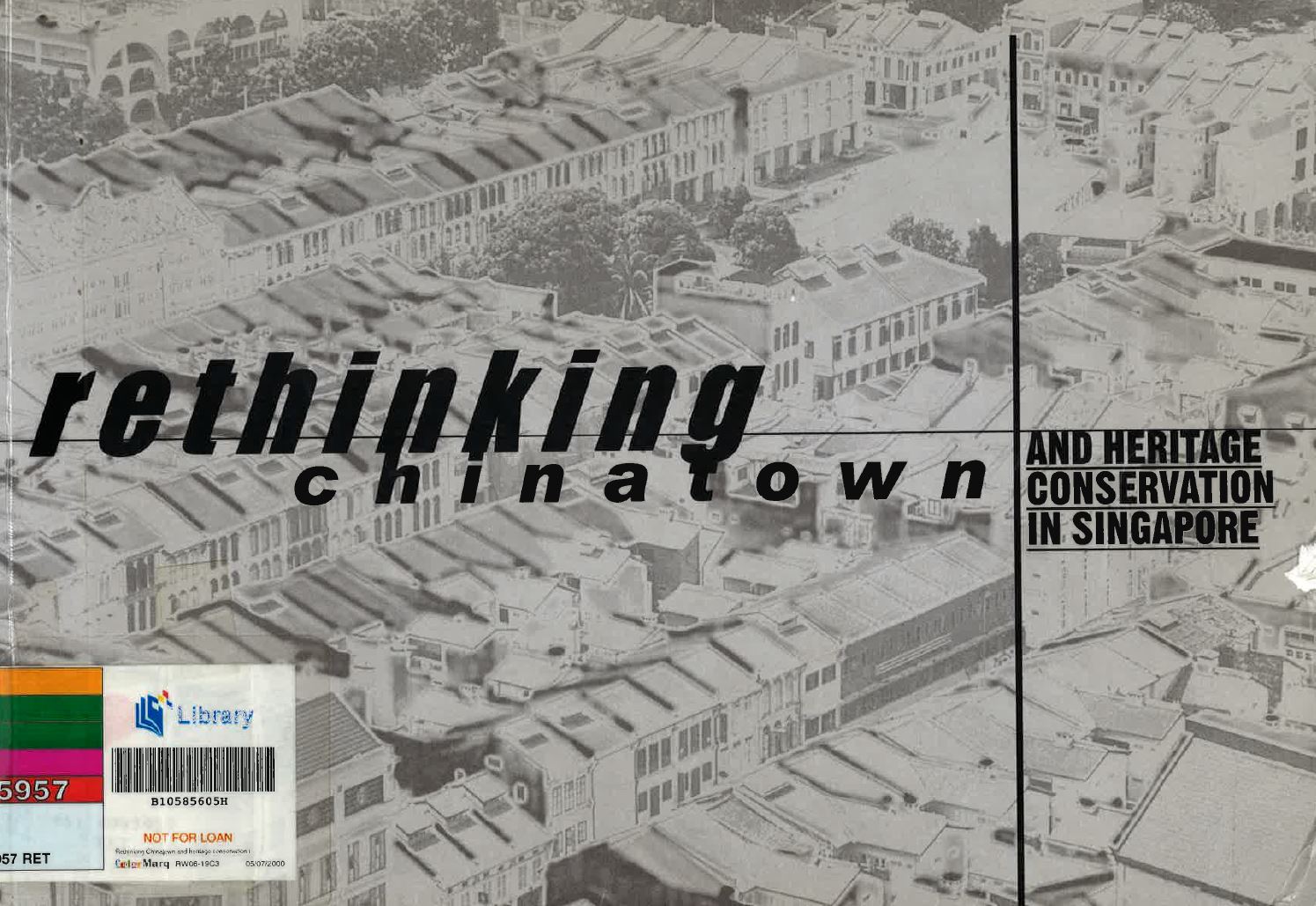 |
Kwok, Kian Woon, C.J. Wan-Ling Wee, and Karen Chia, eds. Rethinking Chinatown and Heritage Conservation in Singapore. Singapore: Singapore Heritage Society, 2000. In 1998, the Singapore Tourism Board unveiled plans to revitalise Chinatown. Stemming from the announcement, the Singapore Heritage Society undertook a study of Chinatown’s heritage and history, focusing on the challenges and opportunities in the redevelopment of the heritage district. |
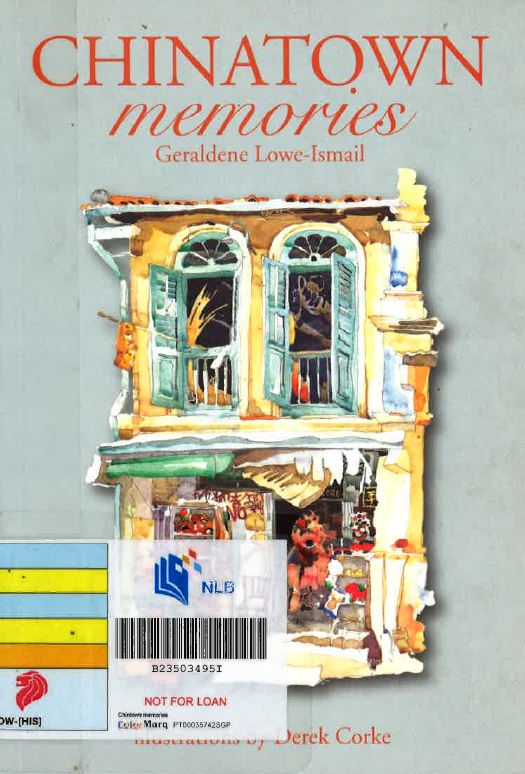 |
Lowe-Ismail, Geraldene. Chinatown Memories. Singapore: Talisman Pub., 2011 Written by heritage tour pioneer Geraldene Lowe-Ismail, this book weaves personal stories together with the history of Chinatown. Both memoir and guidebook, this title will provide readers with a refreshing perspective of the heritage district. |
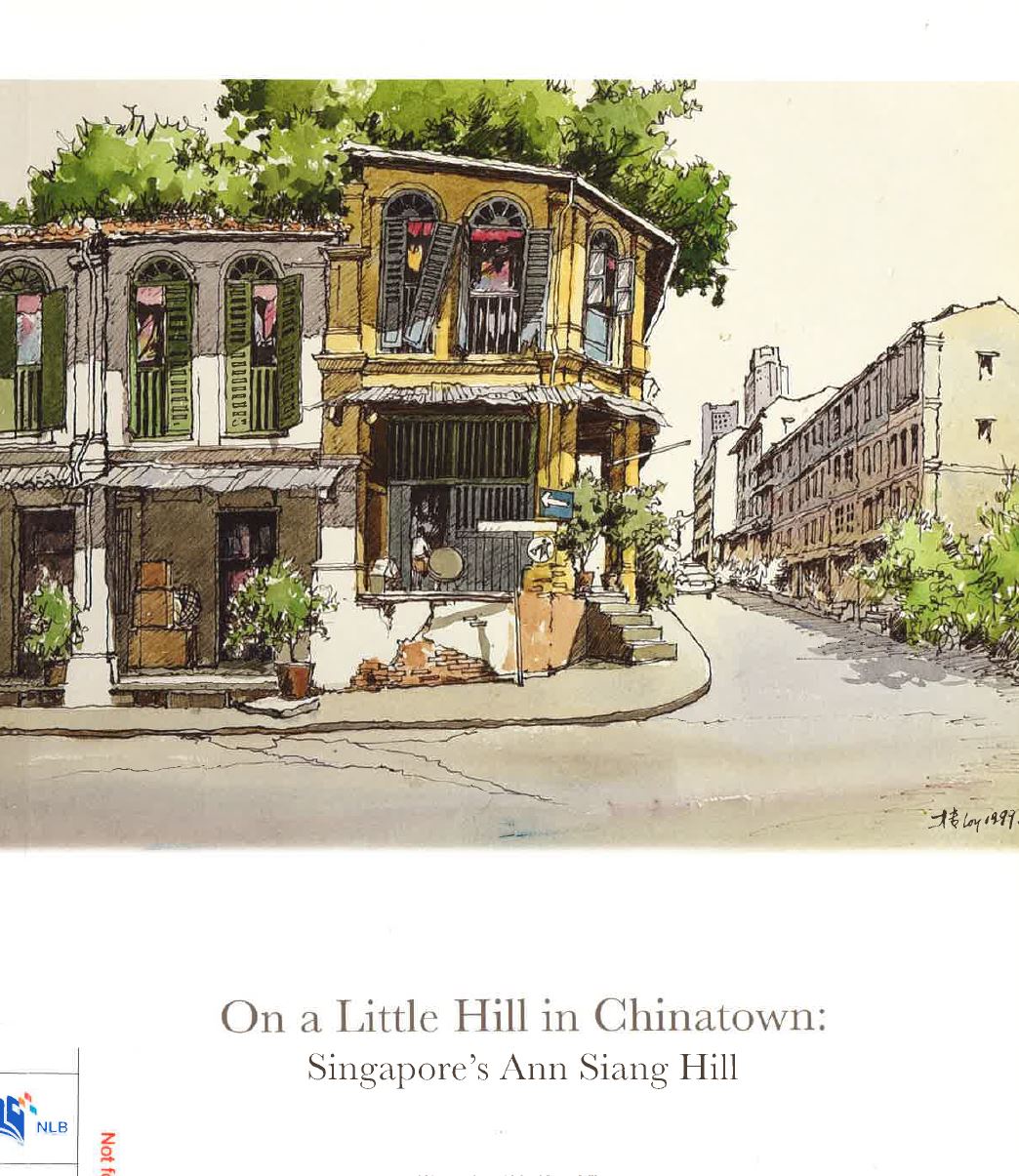 |
Kevin, Tan. On a Little hill in Chinatown: Singapore’s Ann Siang Hill. Singapore: Mileage Communications Pte Ltd., 2018. With previously unpublished stories, historical research and photographs, this publication traces the development of Ann Siang Hill, an area within Chinatown, and its surroundings. The cover of the book features a painting by Loy Chye Chuan, an artist whose work is also displayed as part of Art X Stacks. |
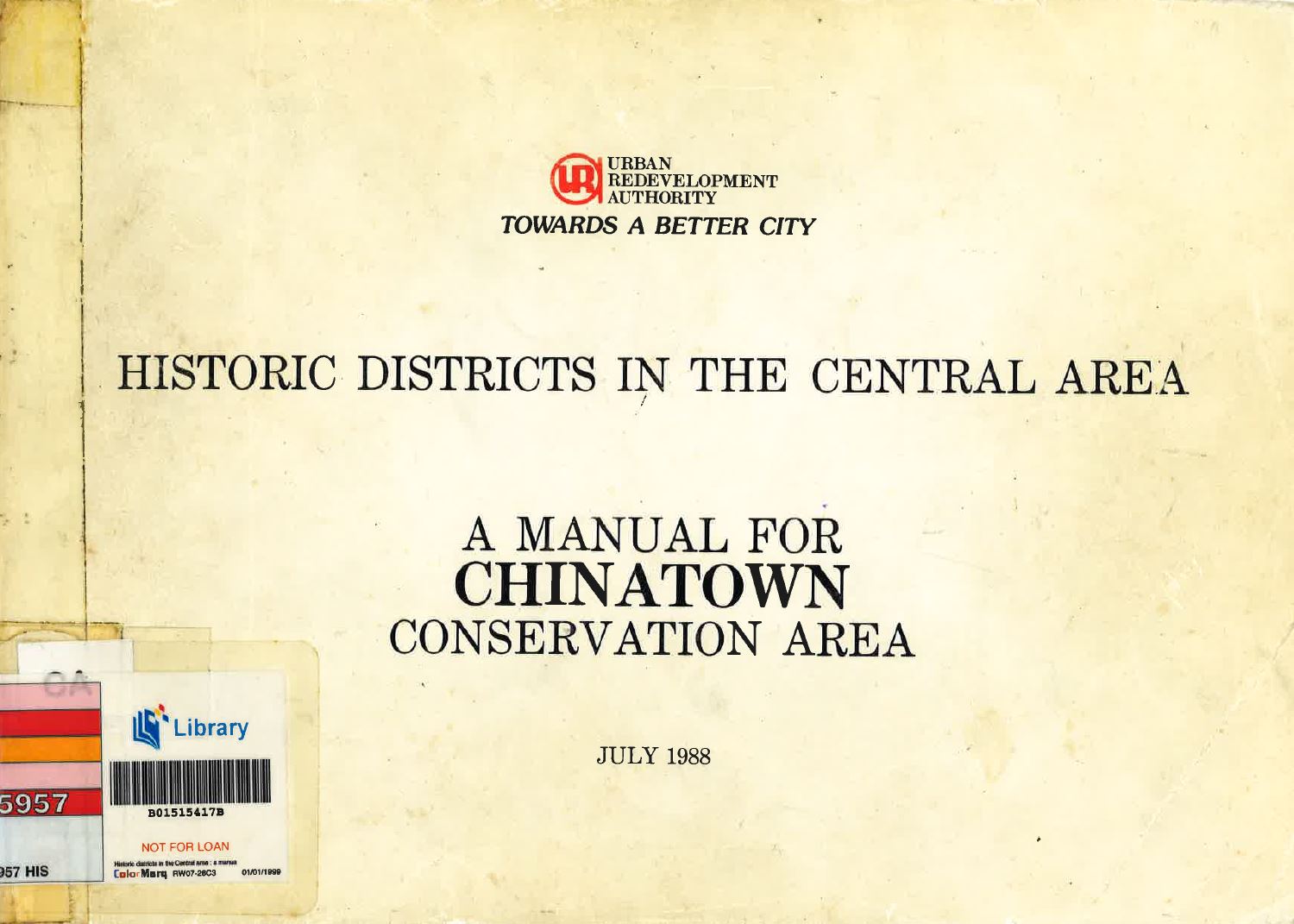 |
Historic Districts in the Central Area: A Manual for Chinatown Conservation Area. Singapore: Urban Redevelopment Authority Singapore, 1988. Published by the Urban Redevelopment Authority of Singapore (URA) in 1988, this manual provides a comprehensive documentation of the urban and architectural features of Chinatown. Sections in this manual include the history of Chinatown, architectural styles, issues in restoration and renovation, and major components of Chinatown’s distinctiveness. |
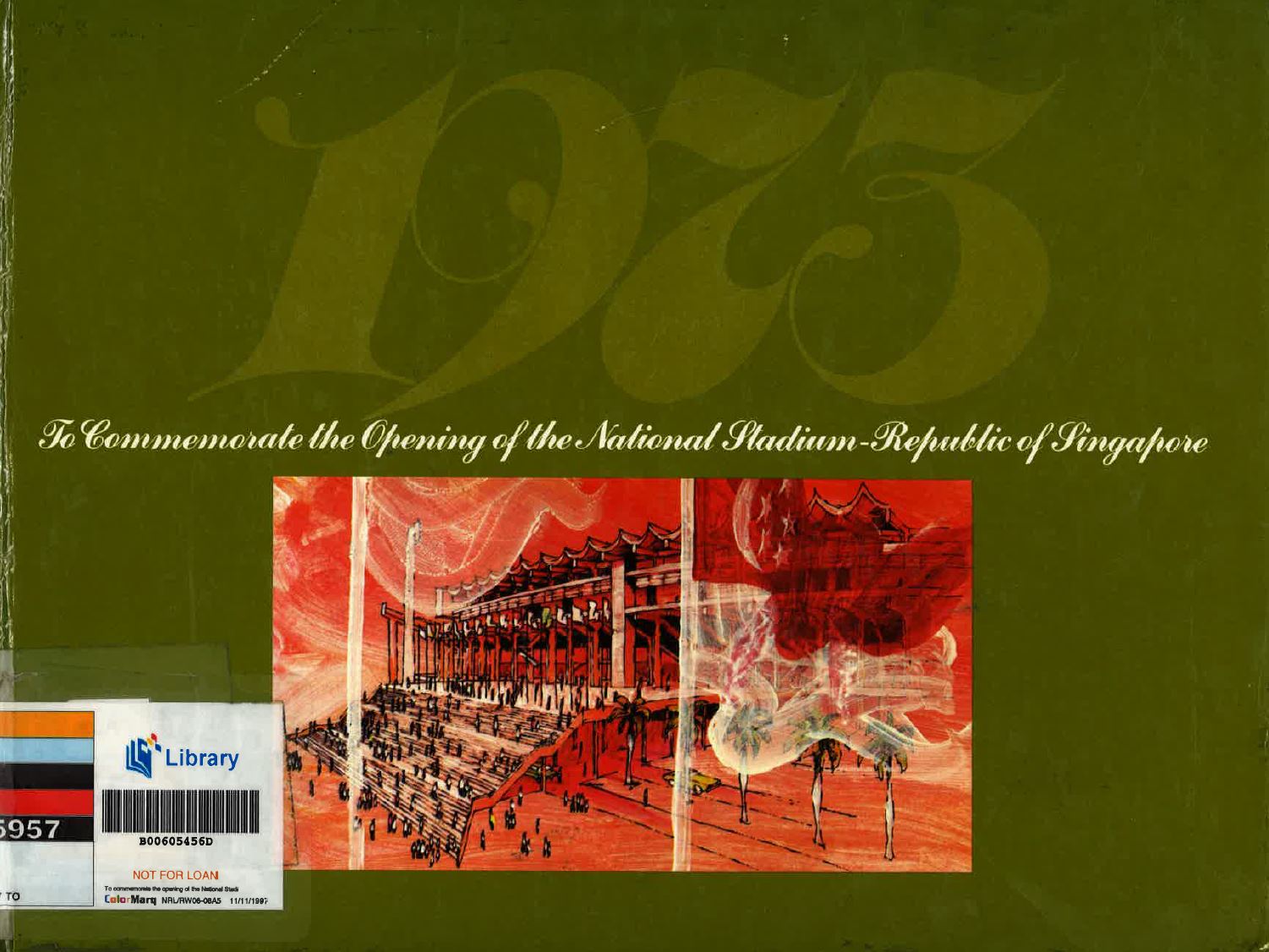 |
To Commemorate the Opening of the National Stadium, Republic of Singapore: 1973. Singapore: National Stadium, 1973. Published on the occasion of the opening of the former National Stadium, this book provides a short introduction to the impetus behind the project and an overview of sports in Singapore. Images of students and athletes using the stadium prior to the official opening are also included. |
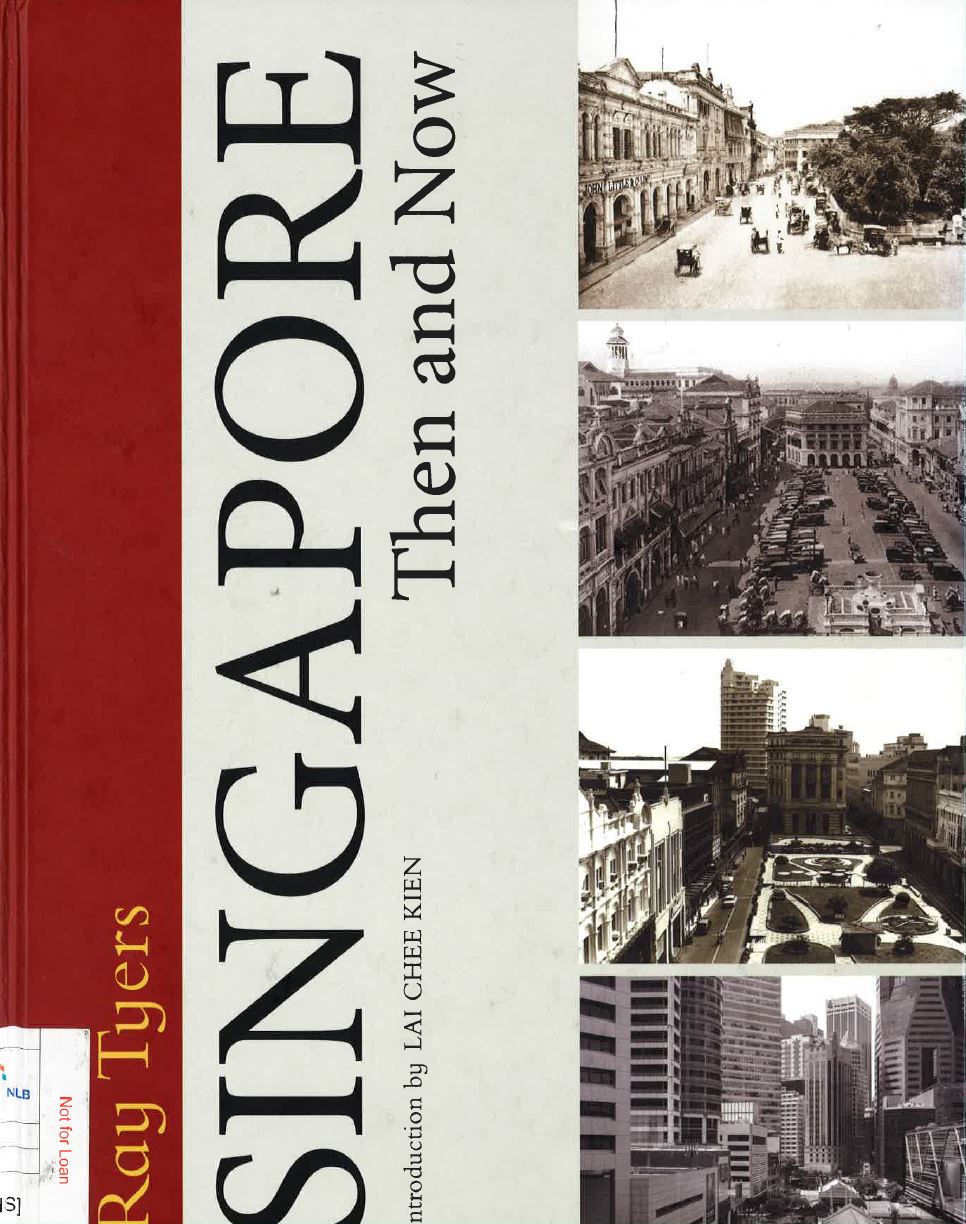 |
Tyers, R.K. Singapore Then and Now. Singapore: Landmark Books, 2018. The earliest version of this book was first published in 1976, where Tyer juxtaposed contemporary photographs with images of the same location taken from the 17th to 18th century. Newer images were later added in a 1993 edition and again in this 2018 edition. Sites around the Singapore River and in Chinatown are also featured. |
Back to top
BiblioAsia articles
-
Bridging History: Passageways Across Water: Librarian Lim Tin Seng traces the history of nine iconic bridges spanning the Singapore River that have ties to the colonial period.
-
Sago Lane: “Street of the Dead”: Among the older generation of Singaporeans who have lived, grown up, or worked in Chinatown from the 1930s to 1960s, death houses bestir grim and depressing memories of the old two- to three- storey red-tiled roof houses that used to line Sago Lane, scattered intermittently among residential dwellings. Librarian Sharon Teng explores this street in more detail.
-
Keong Saik Road: The Other Side of the Red-Light District: Author Charmaine Leung relives the sights and sounds of Keong Saik Road – where she lived in the 1970s and 80s – and says it has more to offer than its former notoriety.
-
Triads, Coolies and Pimps: Chinatown in Former Times: The Chinatown of yesteryear was a thriving hotbed of crime and secret societies. Librarian Lim Tin Seng unveils its less glamorous history.
-
Old Singapore: Places in Pictures and Oral History: Grand Hotel de l’Europe, National Theatre, and National Stadium are just some of the places in Singapore that might have been forgotten without documentation of their stories. Rediscover these buildings of the past with Oral History Specialist Lu Wenshi.
Back to top
Infopedia articles
Singapore River and Chinatown
Bridges across the Singapore River
National Day parades
Back to top
Spotlight: Map Collections
Even though the geographical location of the Singapore River and Chinatown have not shifted over the years, buildings and roads in these areas have seen many changes in urban development. One of the most engaging ways to study these changes is the use of geo-reference maps, which are images associated with at least one or more coordinates so that they can be overlaid on top of street or satellite maps. NLB’s Spatial Discovery is a one-stop platform for users to explore, find and interact with maps across the NAS1 and NL2 collections. Story maps of Chinatown and the Heritage Bridges of Singapore are also available on the Spatial Discovery platform.
Back to top
Spotlight: Photographs
Photographs are often considered documentary in nature, but they can also offer us more intimate views of the cityscape, especially scenes which may no longer exist. Across NL’s National Library Online and NAS’ Archives Online, you will find a wealth of images that give us a glimpse of Singapore in the past.
Here are some photographs of the Singapore River, Chinatown and the former National Stadium. Visit PictureSG and Archives Online for more photographs of these and other sites in Singapore.
- View of street in Chinatown, 1950s
- View of Chinatown and its outskirts, 1890s
- Images of Cavanagh Bridge and Anderson Bridge, with the Elgin Bridge under construction, c.1942
- Singapore River, 1905
- The former National Stadium under construction, 1971
Back to top
Spotlight: Audio-visual Collections
If the photographs in our collections have whetted your appetite, you can explore the NAS’ audio-visual collections to immerse yourself more fully in the sights and sounds of the sites. Here are some recordings of scenes in Singapore from the past, taken from the collection of NAS’ Audio-Visual Archives, where recordings of national and historical significance are collected, documented and preserved:
-
新加坡河 River Of Life (in Mandarin): This documentary features the history of the Singapore River, the life of the residents along the river, as well as employment opportunities on the river. It also highlights changes over the years and documents efforts in cleaning up the Singapore River which was heavily polluted by the disposal of garbage, sewage and industrial waste.
-
Singapore Scene: Filmed by former British military personnel Ken Illsley who was based in Singapore in the late 1950s, this home movie showed scenes of Clifford Pier, workers loading and unloading goods at the Singapore River, trishaw riders on Cavenagh Bridge, streets bustling with people, and families seen hanging around the street hawkers.
-
Changing Landscapes: Chinatown: This documentary was broadcast in 1981 and considers the views of architects, residents and city planners regarding the development of Chinatown. Although four decades have passed since the production of this documentary, issues relating to heritage conservation remain important and relevant today.
-
Opening ceremony of National Stadium (in Malay and English): This is the television broadcast of the opening ceremony of the former National Stadium in July 1973.
-
National Day Parades: The National Day Parade is a major event in Singapore’s calendar and broadcast over national television. Whether you are interested in rewatching the parade from a specific year, or in binge-watching the parades over the years, there is something in this collection for everyone.
Back to top
Spotlight: MusicSG
After watching the National Day Parade, you may be inspired to belt out some beloved National Day songs in the privacy of your home. NL’s MusicSG collection will equip you with lyrics, scores and histories of these songs. MusicSG is an archive set up to digitise, archive and provide access to all forms of Singapore musical works. It assembles a collection of music composed or published by Singaporeans, music produced or published in Singapore, and music related to Singapore.
Read an article on the National Day songs before listening to a medley, including Stand up for Singapore, one of Singapore’s first National Day songs composed by Hugh Harrison in 1984. If you are musically trained, you might be interested in scores for songs such as Count on Me Singapore or Dick Lee’s Home which is one of the most popular National Day songs among Singaporeans. First performed by local singer Kit Chan in 1998, the song is remembered by many Singaporeans who can sing it from memory.
Back to top
This Resource Guide was compiled by Luke Chua, a Senior Librarian at the National Library, Singapore. The information in this guide is valid as of March 2023 and correct as far as we can ascertain from our sources. This list is not intended to be exhaustive or comprehensive. Please contact us at for more reading material on the topics.
-
The NAS database holds maps and building plans, the bulk of which were transferred from government bodies over the years. These maps, including topographic maps, survey maps, general maps, aviation maps and hydrographic charts, record the changing Singapore landscape throughout history. The building plans in the database are dated from before 1946 and are those of private properties. ↩
-
The NL collection forms part of the valuable Rare Materials Collection. It contains topographic maps and navigational charts covering Singapore, Southeast Asia and Asia, as well as town plans and street maps of Singapore and Malaya. The majority of these maps were printed by European map-makers before 1945. These maps illustrate the development of European mapping of early Southeast Asia, as well as the history of the region. ↩

